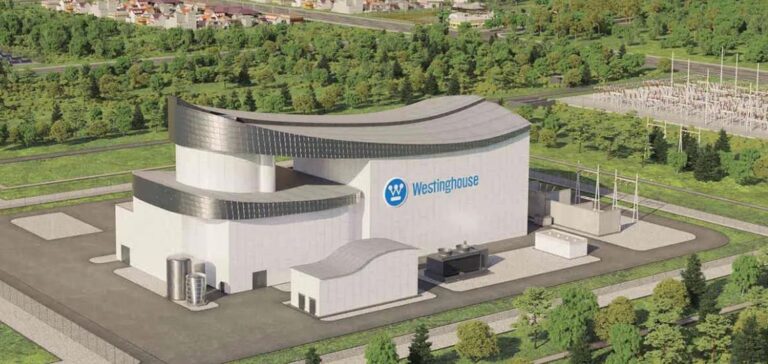Saskatchewan Power Corporation, Westinghouse Electric Company and Cameco Corporation have signed a new Memorandum of Understanding (MoU) to explore technical and commercial avenues for the deployment of Westinghouse reactor technology, including the AP1000 Advanced Reactor and the AP300 Small Modular Reactor (SMR). This collaboration also includes the assessment of a nuclear supply chain to support nuclear energy projects, including fuel, and identifies opportunities for research, development and workforce training in partnership with Saskatchewan post-secondary institutions. Westinghouse once again opts to collaborate with another company, similar to its partnership with Bechtel in Poland.
Background and government support
In 2019, the Saskatchewan government has identified the development of SMR technology as a growth target. In August 2023, the Canadian government approved up to CAD 74 million in federal funding for SMR development in the province, led by SaskPower. The company expects to make a final investment decision in 2029, and intends to use Saskatchewan-produced uranium for any reactor built in the province. By 2022, SaskPower had selected GE Hitachi Nuclear Energy’s BWRX-300 SMR for potential deployment in the 2030s after an evaluation of three SMR technologies. This selection was intended to facilitate a pan-Canadian approach based on a fleet of SMRs, thereby reducing regulatory, construction and operating risks.
AP300 technology development
Westinghouse reactor technology had not been included in SaskPower’s earlier evaluation, which took place prior to the May 2023 launch of the AP300 SMR. This design is based on AP1000 technology, already licensed and in operation. Westinghouse is one of six SMR suppliers shortlisted in October 2023 for UK government support, and has signed an agreement to build four AP300 units in the UK.
Outlook and regional commitment
Rupen Pandya, President and CEO of SaskPower, said the collaboration on nuclear fuel supply and the evaluation of various technologies will strengthen SMR’s development work and the company’s future planning. Patrick Fragman, President and CEO of Westinghouse, emphasized the superior economic performance and proven availability of the AP1000 reactors, as well as the AP300, based on this proven and licensed technology. Tim Gitzel, President and CEO of Cameco, added that decarbonizing Saskatchewan’s power grid is an ambitious and important future goal for the province. Cameco, one of the world’s largest nuclear fuel suppliers, acquired Westinghouse in 2023 in strategic partnership with Brookfield Asset Management and its affiliates. SaskPower has identified two potential sites for an SMR power plant in the Estevan region, in the southeast of the province, where detailed site analyses will begin before final site selection in 2025.






















